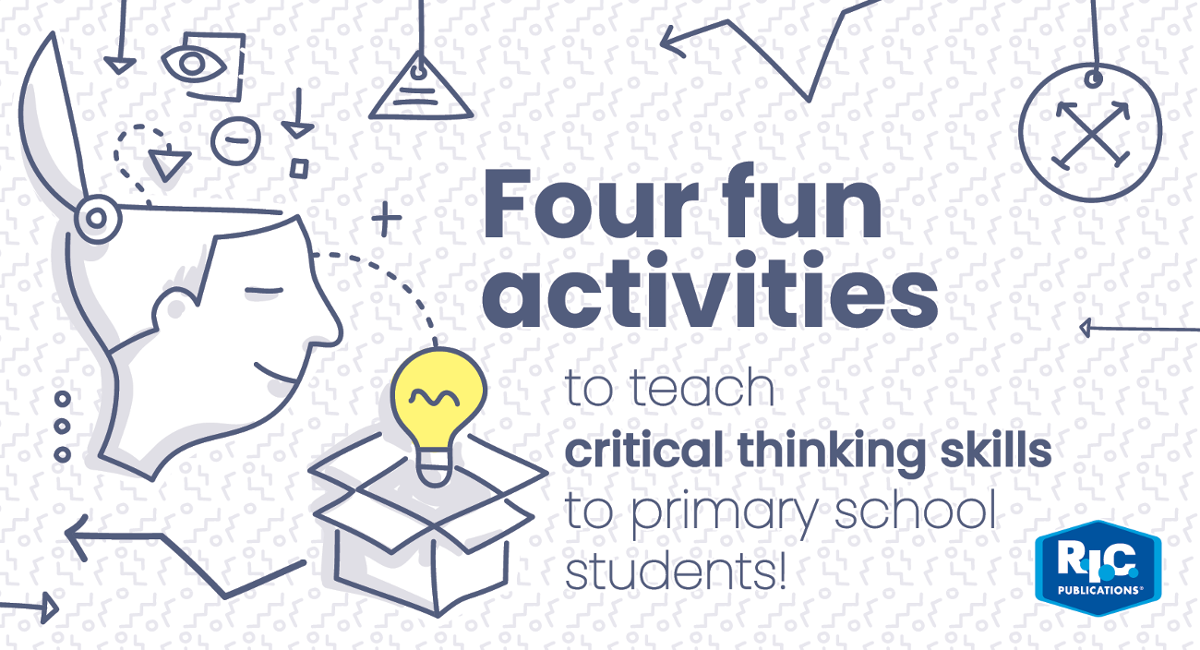- Wednesday 17 April 2019
- 0 Comments
Critical thinking skills aren't necessarily something that we are born with, and most have to be learned throughout a child's education. Children need to be prepared long before they reach the age when critical reading and writing skills are properly assessed. To this end, we’ve developed four fun activities that will help you teach critical thinking skills to primary school-aged children—because they are never too young to start!
Activity 1: A problem-solving role-play game
Role-play situations are a great way to get kids to engage in a lesson and remember it in future. For this activity all you need to do is create or source a scenario that the children are able to relate to. To really engage them, split them into groups and give everyone a part to play to re-enact the situation. The faster this is, the more fun it is ...
Imagine this scenario: Mum has just bought all the ingredients for dinner, but she forgot to buy the chicken! What will we do now? How can we solve this problem? Have the class push their tables together as if they were sitting at the dinner table, then pose a series of 'why' questions at them until they come up with various solutions to the problem. Have a class vote on whose answer was the best or develop a solution together—just remember to slow the pace down for younger children to make sure it all sinks in!
Activity 2: Critical thinking charades
Charades is fun, no matter what age you are; but teaching children how to play using the names of familiar video games, toys or TV shows is a great way to get them to problem-solve on their own in a fun way. Many young children are visual, auditory or kinaesthetic learners (Kidspot), and adding visual and vocal queues to accompanying familiar objects can be helpful in developing problem-solving skills.
To make things easier for a young age group, you don't need to have them draw anything hard. Provide them with picture cards which match their word or phrase and let them use those. Add a double layer of fun by letting them find their own picture cards from a small selection—if they choose incorrectly, they will only learn more!
Activity 3: Tackle tough tasks together
Set the class a difficult task, such as deciding what their class motto or mascot will be, then narrow down this tough task by working together to create many resolutions. Following these steps will help keep your students learning:
- Analyse the situation for any potential pitfalls, identifying areas they might need to think about.
- Apply yourselves to the task as a team and reassure students that the problem is not that difficult if you all work together.
- Arrange your class into problem-solving teams and divide up the task if it is large.
- Assemble your skills, think of all the things each group can contribute and put all the pieces together.
- Brainstorm what can be done to solve this problem, encouraging critical thinking and inclusion of everyone's skills and knowledge.
- Categorise the problem in terms of significance. Is it an insurmountable task?
- Make any changes needed.
- Choose a solution!
If you follow these guidelines you will be working through problems at an unbeatable pace!
Activity 4: Higher-order thinking activity stations
Activity stations are a fun way to have students complete a range of tasks. A number of desks/areas are set up for small groups to rotate through, completing a different activity at each one. This requires teamwork, cooperation and time-management by the children.
The stations can be prompted by activities from the Higher-order thinking skills series. Suggestions for stations include:
- Finding out what is wrong in an image.
- Constructing a bridge over a river.
- Figuring out the mass of objects using scales, and making simple equations.
- Collaborating to interview a famous historical figure.
- Solving common classroom/school problems; i.e. what to do with scrap paper, how to organise students’ desks, where the best place for a vegetable garden would be.
Further information and guidance
For further information on how you can effectively teach critical thinking and problem-solving skills to primary school children we recommend the Higher-order thinking skills books as essential reading. You will find lots more activities, hints, tips and tricks inside to help you get through the coming school year—and all the years ahead!
Higher-order thinking skills is coming in Term 2!
Pre-order today and receive a free bonus pack or download a free digital sample. See how this series can help your students build critical thinking skills through engaging logic puzzles, brainteasers and much more.
